Media | Articles
Long before Tesla, the RC hobby experienced its own electric revolution
Aren’t RC cars just a blast? I’m not sure what it is that makes these controllable model cars so entrancing; there’s just something addictive about exercising automotive adventures on a smaller scale, on or off the tarmac. Looking back at it now, amidst the wheelies, curb jumps, and my trips to the local short-course off-road track, the RC world was quietly serving as a precursor to the full-scale propulsion transition we’re seeing today.
Market shifts hadn’t entered my mind at that point—I was too busy burning through my parent’s AA-battery budget with a Tyco Wild Thing II, a mid-1990s, off-road pseudo-sand-rail. A speedy (and rechargeable) Nikko SLK230 with working retractable hardtop followed, and I quickly set about ruining the table and chair legs around the den with its addictive “TURBO CHARGER” high-speed mode. Sorry, mom!
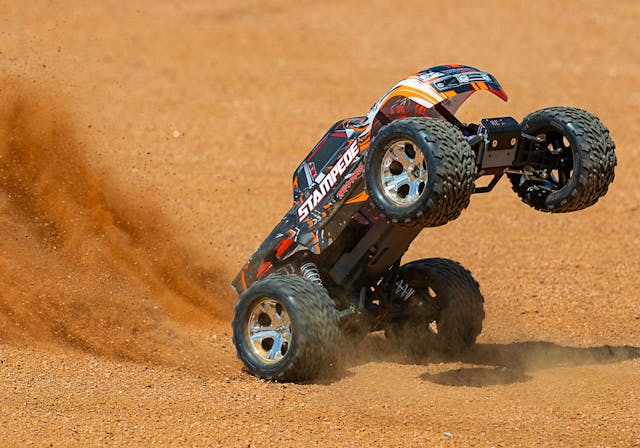
I was completely unaware of the big money, big speed “serious” RC community until middle school, when I met a high schooler who dabbled in the hobby. I first encountered him on my school’s empty soccer pitch, where his nitro-powered RC monster truck blasted by at ridiculous speed, its high-pitch exhaust screaming. My tiny mind was now in a million tiny pieces. I can buy an RC car that goes this fast? I can make this much of a ruckus with a controller?
Of course, a serious RC car of any type was well beyond my budget—slot cars had to suffice for the time being. At some point, my dad brought me to the bygone Mike’s Hobby Shop in my hometown of Dallas, where short-course trucklets slid and leaped over compacted dirt jumps and whoops. A few yards away, a carpet course for drifting and a race circuit mapped out in the back lot made Mike’s a bit of a mecca for the hobby.
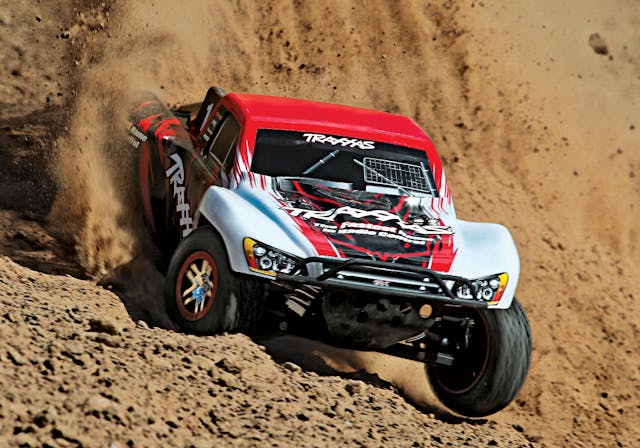
When I finally got enough cash to pick up a car of my own, the choice between nitro and electric was obvious; I wanted to spend my time driving, not tinkering, so a ready-to-run (RTR) electric chassis was perfect for me. Back in the late 2000s, nitro still had a strong hold on the market, but those chassis were more expensive and seemed oriented for folks who enjoyed tweaking their vehicles as much as driving them. I settled on a battery-powered Traxxas Slash, which would go on to become one of the most popular RC cars of all time.
Marketplace
Buy and sell classics with confidence
I enjoyed it for a few years, but a few moves across the country relegated it to the “I’ll fix and upgrade it when I have more time” pile. I stopped thinking about RC cars in a serious capacity—until last month.
Traxxas’ sprawling booth was one of the first displays I found at this year’s SEMA show. After futzing with its adorable and fabulously priced TRX-4M mini-crawler, I picked up a product catalog of Traxxas’ entire range. The pages were packed with every possible varietal of scale RC car you can imagine; I could dedicate an entire article on Traxxas’ monster truck offerings alone.
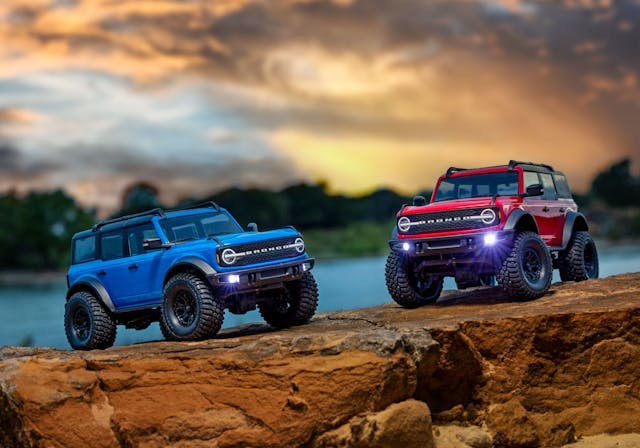
Between stacked descriptions for rock crawlers, 100-mph scale supercars, and R/C boats, I found a single page dedicated to the company’s nitro–powered RC vehicles. Having remembered nitro RC cars as the top-dog vehicles when I was a pup, I was amazed when the Traxxas reps at SEMA estimated that nitro cars make up only about five percent of their total business.
What gives? I wondered about this electric revolution that had apparently taken place not long after my Slash had found its way into a moving box and into storage. It seemed like I was about to encounter a story we’re seeing play out today at a different, erm, scale.
As the greater automotive industry moves inexorably toward a future ostensibly free from the internal combustion engine, the RC hobby provides a bit of an encapsulated simulation of what’s to come.
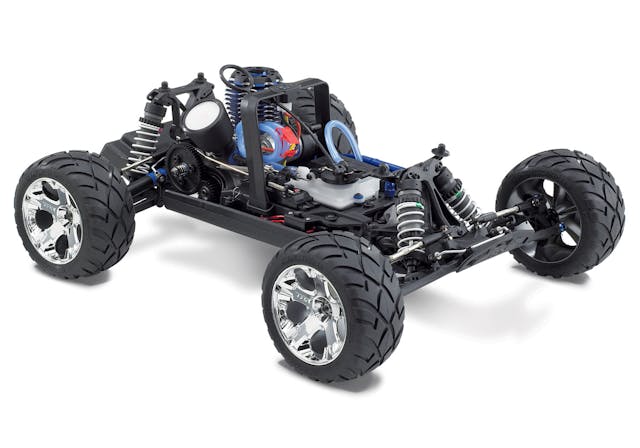
First things first—nitro RC isn’t dead. There is still an active community and market for the micro two-stroke stuff. However, it’s become a more specialized niche with its own dedicated following.
Just like the big stuff, propulsion popularity has waxed and waned in waves. The RC hobby began in earnest in the 1970s, the field of scale-model race cars and buggies utilizing a mix of both nitro and battery powertrains. According to timelines published by RC historians, the late 1970s early 1980s marked the kickoff to the hobby’s golden era, a phase that began to favor electric drivetrains, particularly with the sharp rise in off-road RC popularity.

Most electric RC cars at this time ran on rechargeable nickel-metal hydride batteries; slow to recharge and holding less range than modern packs, these were nonetheless an apparent step ahead of that era’s internal combustion alternatives. Nitro’s market share gradually grew over the following decade as manufacturers made improvements, until the ICE RC car surged in popularity in the late 1990s through the late 2000s.
To get a more detailed perspective, we went local: RC has always been a grassroots hobby. My experience at Mike’s in Dallas as a teenager was, and still is, replicated across the country a daily basis. Sure, you can order any pint-size off-roader online, but when you need a hand with a repair or actually want to race with others, your nearest hobby store is the place to go. We got a hold of veteran RC enthusiast Jay Lunar, who manages the Mentor, Ohio HobbyTown (an occasional haunt of Insider Senior Editor Eddy Eckart) to help gain context on how RC propulsion has evolved over the years.
Traxxas introduced its first RTR Nitro vehicle, the Nitro Hawk, in 1992, but it was 1999’s T-Maxx that really set the nitro RC world alight. “When the T-Maxx came out, that’s what really pushed Nitro to the forefront,” said Lunar. “That was the first RTR nitro car that was attainable to almost everybody, performed well, and was really durable.”
Soon, a wealth of RTR nitro competitors sprung up. The appeal was hard to resist—with superior speed, power, and run time, not to mention the fact that they came fully assembled, people flocked to the T-Maxx. “Before that, for the most part, you had to build a nitro car,” said Lunar. “RTR got a lot more people into nitro.”

Despite that, nitro’s status as the powerplant to have would last only about a decade. Electric tech was quickly closing the gaps in speed and power.
The electric Traxxas Slash’s 2008 debut in part helped usher in the end of the nitro dominance that its T-Maxx forebear helped create. While not solely responsible for the pivot, the Slash was at the forefront of models carrying the electric flag. The truck became wildly popular and spawned its own racing series across the country, and with it spread updated electric technology.
Brushless motors, which had been a part of the R/C airplane scene for some time, had begun to be more readily available for RC cars a few years ahead of the Slash, increasing speed potential significantly. The other part of the electric equation—batteries—were not far behind. “Around 2010 was when you began to see LiPo [Lithium Polymer] batteries more regularly,” said Lunar. “They were very expensive at first, but they gradually started getting cheaper and cheaper. Depending on the size, two- and three-cell batteries were crazy expensive and fast. That was what was giving you 60, sometimes 70mph, depending on how you built the car.”
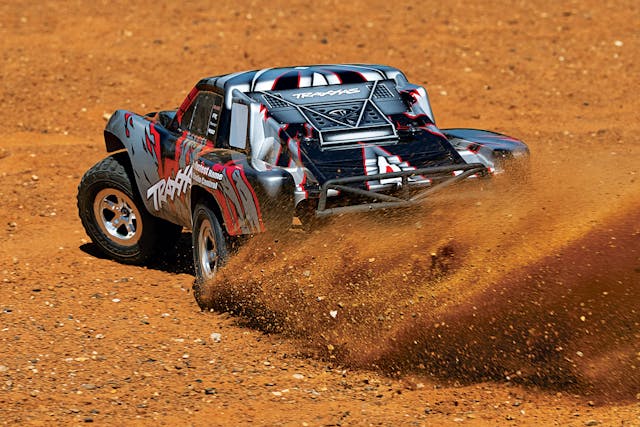
Those may sound like heady numbers, but it’s not uncommon to see 80, 90, or even 100mph out of an electric R/C car these days. ARRMA, one of Traxxas’ primary competitors, fields two vehicles, Infraction and Felony, that are both capable of 80+ mph out of the box. Not to be one-upped, Traxxas’ XO-1 1/7 RC car claims a 0-60 time of 2.3 seconds and a 100 mph top end. Pint-size Tesla Plaid-level performance surely suggests the end is in sight for nitro, doesn’t it?
Not quite. While the market’s shrunk considerably and nitro vehicles make up a smaller share of manufacturer catalogs, Lunar states that nitro cars still make up about 25% of Mentor HobbyTown’s RC sales.
“People who love engines love the sound, the smell, the visceral feel of it all,” said Lunar. They want to tinker. Anybody that’s still a motor-head, anybody that does actual power sports or is into cars and motorcycles, still likes nitro cars.” Sound familiar?
This is as much about different strokes for different folks as anything: people are buying particular models for specific objectives, just like the do in full-scale. Do your space constraints limit your speed? A brushed-motor vehicle is good for around 30 mph and is still a blast to drive. Got a need for speed and want to bash around? RTR electric is your likely choice. Is wrenching and tuning as much fun for you as racing? Nitro it is.
Oddly enough, there are fringe propulsion similarities, too: hydrogen fuel-cell RC enthusiasts appear to be a growing, if small, subculture. Toyota worked with Tamiya to create a 1/10th scale Mirai that runs on hydrogen, like the real thing.
Sure, the RC world doesn’t have to worry about charging infrastructure or other myriad challenges, but the parallels with full-size cars are unmistakable. Blisteringly fast, easy to maintain, and all too simple to pop in a battery and hit the track, the appeal of electric RC is easy to understand—I made the same choice when I bought my Slash. It’s heartening, though, to know there’s still a contingent of nitro die-hards who love the mechanical engagement of building a machine and finding speed through experimentation. Hot rodding never dies, man—even at 1/10th scale.
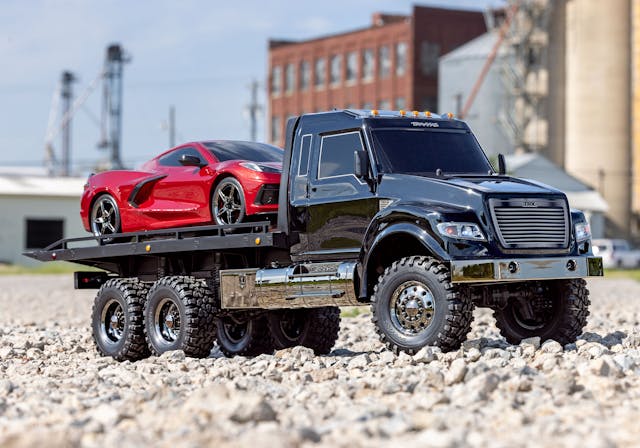
Check out the Hagerty Media homepage so you don’t miss a single story, or better yet, bookmark it.
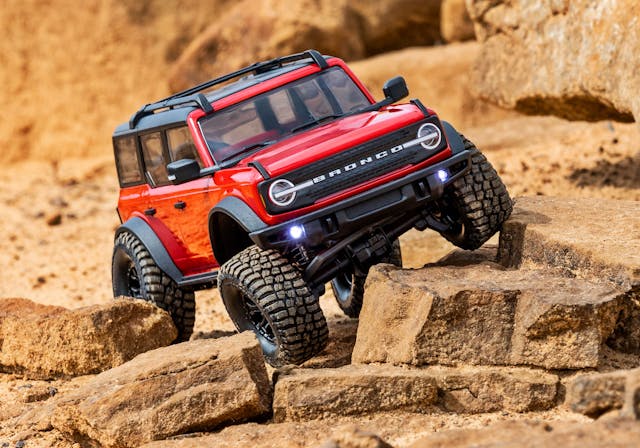


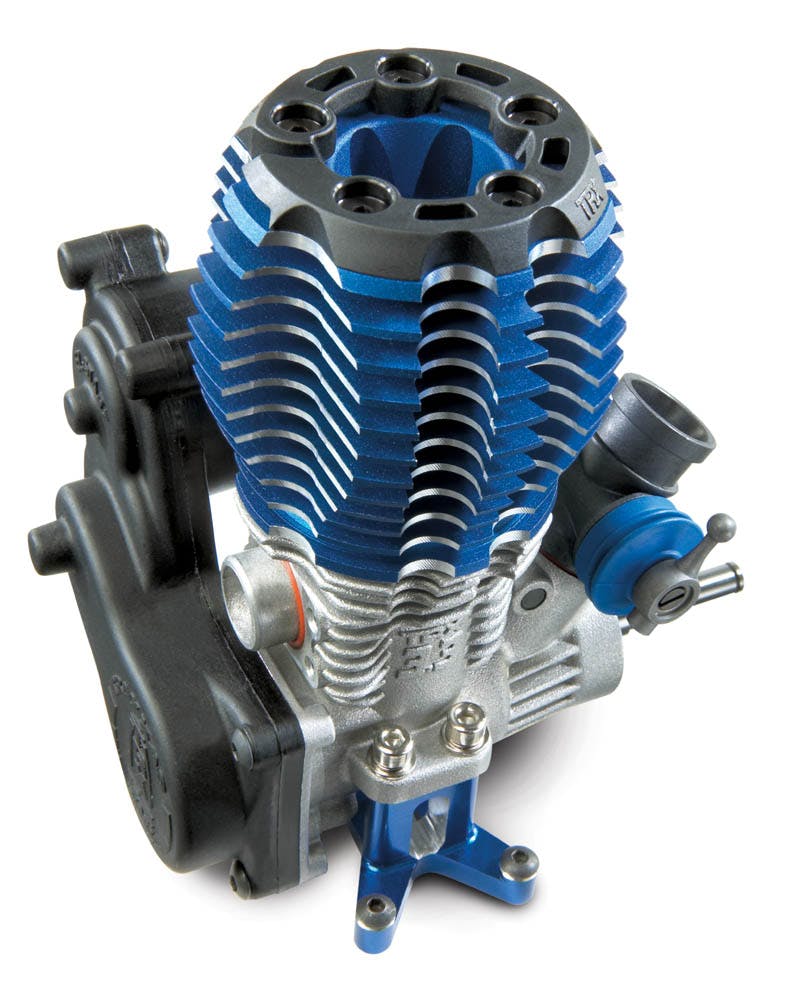
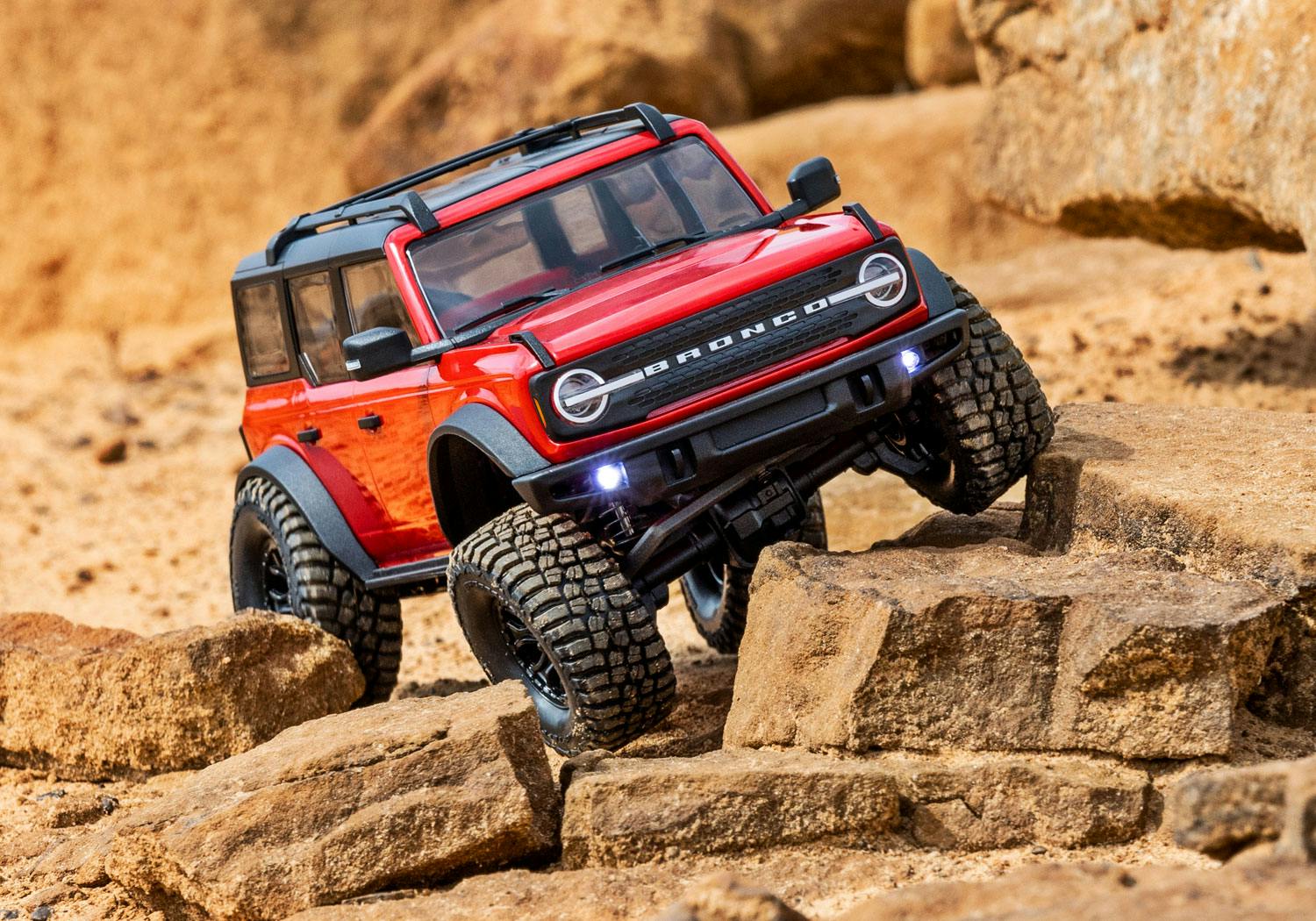
“ Sure, the RC world doesn’t have to worry about charging infrastructure or other myriad challenges”
Details, details…
Glad you mentioned the R/C plane hobby. It goes way back… my poppa did the 1940s balsa wood with control wires down to you powered by a real engine version of this.
There’s a local club that has an airfield for events. Some of them are for sure running combustion engines or very realistic soundtracks I suppose…
Great article! As an early 90s teen I had a 1:10 scale Losi Junior T stadium truck. It was fun but not very fast and I was in awe of the guys w the gas-powered screamers. Never got one of those, but went straight to the real thing in high school w an ‘88 Mustang GT which I was able to wrench on. FF to now and my 3rd grader has a dual 3S LiPo powered RC boat that does 50 + mph and it’s awesome. I get that electric will overtake ICE in the 1:1 scale market soon enough and I’m fine w it, but I’ll stick to ICE power as long as there are gas pumps. They’re just too much fun.
I’m not sure if this comparison is even apples to oranges — having started building and flying RC planes in the mid-1980s, I know that much of the push into electric motors and lightweight batteries was forced upon the hobbyists by city/town/county ordinances cracking down on the rather loud noises coming from 10-20 “glow” engines — and that doesn’t even consider the big quarter-scale biplanes using powerful gas chainsaw or weedwacker engines!!! I loved those planes, and the sound of a big 60 engine open full throttle makes me smile… but unless your flying field was way out in the country (our was next to corn fields and cow pasture), local governments were enacting new noise level laws that made it a do-or-die decision for lots of local clubs — something the AMA (Academy of Model Aeronautics) has helped thousands of local clubs deal with over the past few decades. When your options are Be Quiet (i.e. Go Electric) or get shut down or arrested for violating noise ordinances… the decision is made for you.
That said, once forced to consider electric motors & batteries, many modelers found they liked it — especially the ability to fly small 12-24″ wingspan planes INSIDE gymnasiums, hangers, church halls, etc. Sure, they were crazy expensive at first, but it was never a cheap hobby to begin with. Like golf, it was never a poor man’s game.
But RC cars, planes, boats, are for fun. Like the bumper sticker says, the only difference between men and boys is the price of their toys (mine is a 19′ Yamaha jetboat). Toys are rarely practical.
No, I think a more apt comparison is with battery powered yard tools/equipment. Many people in my neighborhood, myself included, have slowly replaced gas-powered tools with cordless battery-powered tools. My walk-behind self-propelled lawnmower and trimmer are 40 volt Ryobi, my new pressure washer is (corded electric) SunJoe… but my new Stihl chainsaw and Stihl leaf blower are fueled by dead dinosaurs– as stinky and messy as they might be compared to battery powered tools, the power and reliability are not there yet. When a severe snowstorm knocked over tons of trees and knocked out the power for 3 days, I was glad my chainsaw had hours and hours of utility, a.k.a. fuel, sitting right next to it.
And that brings me to my point: average Joe’s like myself can afford to have some battery-powered tools that we use now and then, but looking at a the landscaping crews throughout the neighborhood, not to mention the grounds crew (country club community & we live on the 5th tee box), approximately ZERO percent of their mowers, blowers, trimmers, saws, edgers, aerators, et cetera, are battery powered. I feel BEVs will stay the same way for the next few decades– the cost and use limitations will be tolerated by a small but sizable percent of the population that can afford that luxury, but for most people, their car or truck is not a toy that can have severe costs or limitations– they need to be able to tackle any task at any time under any weather conditions without any hesitation, for almost any distance. Novelties like the F150 Lightning will remain a novelty (or a drivable virtue signaling device) for the next 20-50 years — or longer as the countries that produce cobalt and lithium become war zones and the price of batteries takes off like a rocket.
No, real cars will not share any history with RC cars when it comes to BEVs. One is an expensive toy, the other… is not.